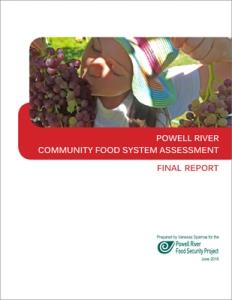If you consult the Animal Control Consolidation (by-law #1979) in conjunction with the zoning map of the City of Powell River, you can figure out whether you are allowed to keep animals on your property other than dogs or cats. Here’s how it works:
Go to page 4 of the Animal Control Consolidation. Clause 29 states:
29. No person shall keep any animal, other than a dog or cat, on a parcel of land in the District unless the land is in an area zoned RA1, A1 or A2 under the Powell River Zoning Bylaw No. 1851, 1999 except in the lawful operation of a pet shop or veterinary clinic.
There are no exceptions to this clause. So look at the zoning map. If you are not in an area zoned RA1 (Residential Agricultural), A1 (Small Lot Rural Residential), or A2 (Small Lot Rural), then you are out of luck. You’ll have to raise small animals on the QT. These zones cover all of Wildwood, except for Catalyst’s landfill; most of the parts of Cranberry lying to the south, east, and north of Cranberry Lake; and a few areas on the edge of Westview as well as the lands surrounding the hydro right-of-way.
Let’s say that you do happen to live in an area zoned RA1, A1, or A2. Clause 30 of the Animal Control Consolidation states:
30. No person shall keep any animal, other than a dog or cat in the District unless:
a) 0.4 hectares (1 acre) of land is provided for the animal, and
b) an additional 0.2 hectares (0.5 acres) of land is provided for each additional animal.
c) Notwithstanding sections 30 (a) and (b) of this bylaw, a person may keep any animal, other than a dog or cat on a parcel of land in the District in an area zoned Residential Agricultural (RA1), under the Powell River Zoning Bylaw No. 1851, 1999 provided that:
(i) 0.2 hectares (0.5 acres) of land is provided for each animal.
So now we learn that in order to keep any animal other than a dog or cat, you need to be in an area zoned RA1, A1, or A2; and you must also provide an acre of land for the first such animal (clause 30(a)) and a half-acre for each subsequent animal (clause 30(b)).
Clause 30(c) informs us that if you are in area zoned RA1, however, you only need a half-acre for each animal, not a full acre for the first animal and a half-acre for the subsequent ones. (So zone RA1 is clearly the gold standard of urban agricultural zones.)
Now we get to clauses 31 and 32:
32. Notwithstanding section 30 of this bylaw, a person may keep up to 24 poultry, one of which may be a rooster, or 50 rabbits on a parcel of land in the District having an area greater than 0.2 hectares (0.5 acres).
31. Notwithstanding section 30 of this bylaw, a person may keep up to 12 poultry, none of which may be a rooster, or 20 rabbits on a parcel of land in the District having an area of 0.2 hectares (0.5 acres) or less.
Upshot of these two clauses: the business we just went through about needing an acre for the first animal and so on does not count if we are talking about poultry or rabbits. In the case of poultry or rabbits, you need to be an area zoned RA1, A1, or A2, as always; but if your property is half an acre or smaller in size then you can keep “up to 12 poultry, none of which may be a rooster, or 20 rabbits”. If your property is larger than half an acre then you can keep “up to 24 poultry, one of which may be a rooster, or 50 rabbits”.
It seems that the by-law is written so that poultry and rabbits are mutually exclusive. At any rate, there is no simple way of figuring out of you can keep some mix of poultry and rabbits, and if so how many poultry equals one rabbit.
So, in the interests of simplifying this, here is the decision tree:
1. Do you live in an area zoned RA1, A1, or A2? (Consult the map.) If yes, go to (2). If no, you cannot legally keep livestock in the City of Powell River. Go to (7).
2. Is your property half an acre or less in size? If yes, go to (3). If no, go to (4).
3. You may keep up to 12 poultry, none of which may be a rooster, or 20 rabbits. If your property is in an area zoned RA1, and it is precisely half an acre in size, then you can keep one other animal other than a dog, cat, poultry, or rabbit. Go to (7).
4. You may keep up to 24 poultry, one of which may be a rooster, or 50 rabbits. Is your property in an area zoned RA1? If so, go to (5). If not, go to (6).
5. You can keep animals other than a dog, cat, poultry, or rabbit, as long as you provide a half an acre per animal. Go to (7).
6. You can keep animals other than a dog, cat, poultry, or rabbit, as long as you provide an acre for the first such animal and a half an acre for each subsequent animal. Go to (7).
7. Confused? If yes, then go back to (1) and try again. If not, you’re done.
So, it’s a little complicated, but not terribly so.
The upshot is that there are large parts of the City of Powell River where livestock are illegal. This needs to be investigated and changed if needed. Who wants to help with that?





